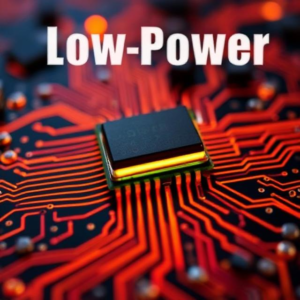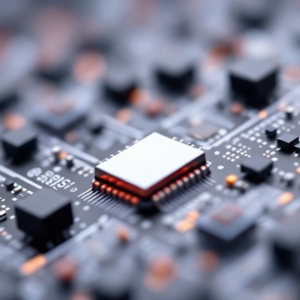Low-power circuit design focuses on creating electronic circuits that consume as little power as possible. This is important for devices like smartphones, wearables, and sensors, where battery life is a key concern. Here’s an easy breakdown of the topic:

1. Why is Low Power Important?
- Battery life: Devices like mobile phones or IoT sensors need to last longer on a single charge.
- Heat management: Consuming less power generates less heat, preventing devices from overheating.
- Environment: Less power consumption is better for the environment, as it reduces energy use.
2. How is Power Consumed in Circuits?
Power is mainly consumed in two ways:
- Static Power: Power that is consumed even when the circuit is not doing anything (e.g., leakage current in transistors).
- Dynamic Power: Power consumed when the circuit is actively switching and performing tasks (e.g., turning a transistor on and off).
3. Techniques to Reduce Power Consumption:
A. Reduce Supply Voltage (V):
Lowering the voltage at which circuits operate reduces power. Power (P) is proportional to the square of the voltage (P = V²/R), so a small decrease in voltage can result in significant power savings.
B. Use Low-Power Components:
- Low-voltage transistors: Special transistors are designed to operate with low power, reducing the overall consumption of the circuit.
- Low-power logic gates: Logic gates (AND, OR, etc.) that consume less energy are used.
C. Clock Gating:
- Clock signals control when circuits work. If a circuit does not need to do anything, its clock can be turned off, saving power. This is called clock gating.
D. Sleep Modes:
Many devices have sleep modes or standby modes where they turn off parts of the circuit that are not needed for a while, saving power.
E. Dynamic Voltage and Frequency Scaling (DVFS):
This technique involves adjusting both the voltage and frequency of the circuit based on the workload. When the workload is low, the voltage and frequency can be reduced, which saves power.
F. Power Gating:
Entire sections of a circuit can be powered off when they are not in use. This is useful for devices that only need to perform certain tasks at specific times.
G. Optimizing Circuit Design:
- Minimize Switching Activity: Reducing the number of times components need to switch states (like from 0 to 1 or vice versa) reduces power usage.
- Optimized layout: Good design can reduce the resistance and capacitance in a circuit, making it more efficient.
4. Examples in Everyday Electronics:
- Smartphones: They use low-power processors and have various power-saving modes to extend battery life.
- Wearables (e.g., fitness trackers): These often work in low-power modes to last for days on a small battery.
- IoT Devices: Internet of Things (IoT) devices that send data periodically use low-power techniques to remain operational for long periods on small batteries.
5. Challenges in Low-Power Design:
- Performance vs Power Trade-off: Sometimes, reducing power can slow down the device or reduce its functionality. Designers must find a balance.
- Complexity: Designing low-power circuits requires a deep understanding of both the hardware and the workload, and it can make the design process more complicated.
Conclusion:
Low-power circuit design is all about making sure electronic devices use the least amount of energy possible while still doing their jobs effectively. By using special techniques like reducing voltage, turning off unused parts, and optimizing design, engineers can extend battery life and make devices more efficient.











